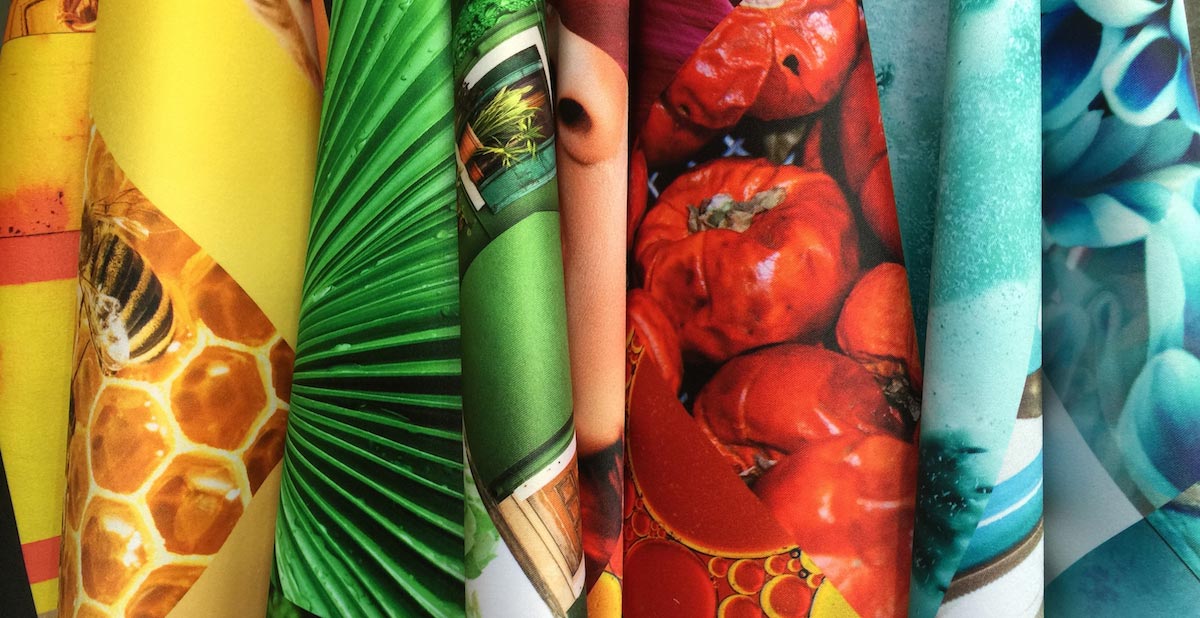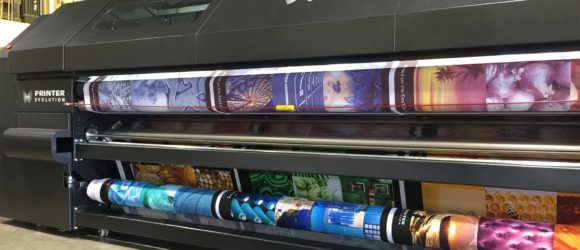Digital Textile Inks: Sublimation, Dispersion, Reactive and Acid.
Take A Dive into “Dye Sublimation” Digital Textile Inks
For many in the industry, “dye sublimation” is synonymous with digital textile printing. In reality, sublimation is just one of several processes that can be used to print on textiles. Theoretically, any large format printer that can print on fabric can be called a fabric printer. However, for the purposes of this blog, we are speaking only about true digital textile printers that are engineered to bond or infuse ink into fabric. This differs from other technologies like latex or UV that lay ink on top of the surface of fabric.

DISPERSE INKS
The most widely known type of digital textile ink is disperse ink. This is what is used in the dye-sublimation printing process. These inks infuse into and actually dye the fabric, becoming part of the textile itself. Disperse inks are broken down into low-energy, medium-energy and high-energy dispersion.
Our commonly used “dye sublimation inks” are a low-energy dye dispersion, most typically used for transfer printing from paper to fabric. The sublimation process requires the use of a calender to apply heat and pressure. The carrier evaporates and the dye turns to gas when heated to a high temperature (380-400 F). The synthetic fibers “open” to receive the gas and when they cool, they close and encapsulate the colorant. The colorant then returns to a solid, actually dyeing the material.
REACTIVE INKS
When the dyes in reactive inks are applied and fixed to pretreated fabric, they create a chemical bond with the cellulose in that fabric. Reactive inks do best on linen, rayon, nylon and other cellulosic materials.
ACID INKS
Acid inks require pretreated fabric for fixation and are printed directly to the textile then steamed to set the ink. The dyes that make up acid ink create ionic or electrostatic bonds with textiles such as silk, wool, and nylon. Fabric with reactive and acid ink must be washed after transfer to remove any residue. Reactive and acid-based inks also have to be set into the fabrics with a post-processing heating procedure to permanently set the dyes.
PIGMENT INKS
Pigment inks are finely ground powders suspended in liquid carriers with binders. Where sublimation creates permanency when the dye is encapsulated into a polymer, pigments are bonded to natural fabrics using binders and a heat calender process. Digitally printed natural fabrics are in high demand, so this is an area we expect to see significant growth in in coming years.
Which inks are best for which fabric:
- Disperse and sublimation are used on polyester, acetate rayon, poly-Lycra® and acrylics and require post treatment heat
- Reactive dyes are for cotton, linen, rayon, nylon and other cellulosic materials and require pre- and post treatment
- Acid dyes are best for wool, silk, polyamides, cashmere, angora and nylon and require post treatment
- Pigment works on cotton and natural fabrics and requires post treatment heat
Digital Textile Printers – Where To Start
Global Imaging is pleased to offer a variety of direct and transfer digital textile printers perfect for your business. For more flexible applications where businesses handle a variety of materials, we recommend offline printers like the PrinterEvolution T Series. This model can be configured to print direct or transfer and requires a separate calender to fix the inks. In this case we recommend Monti Antonio Calenders.
Are you planning on printing backlit graphics or flags? Inline printers like the PrinterEvolution D Series have a calender built in. This printer is ideal for shops that need a direct-to-fabric device for specific applications like these, or simply want the efficiency of an all-in-one system.
Still not sure which is right for your business? We’re here to help. Contact Global Imaging to receive a personalized analysis today.


